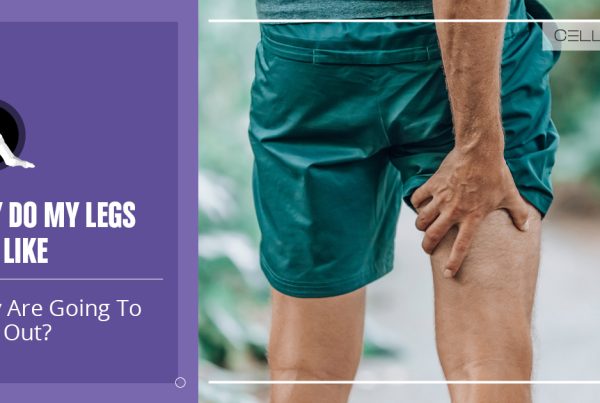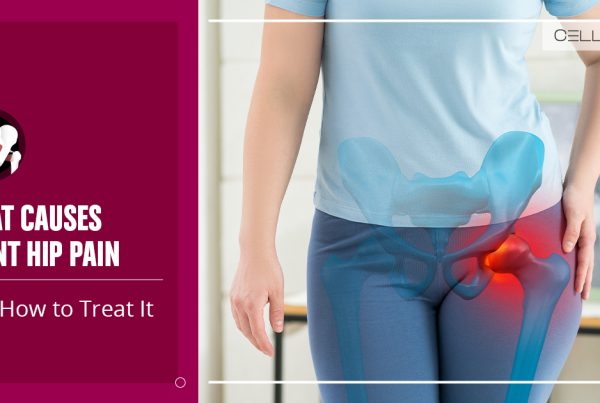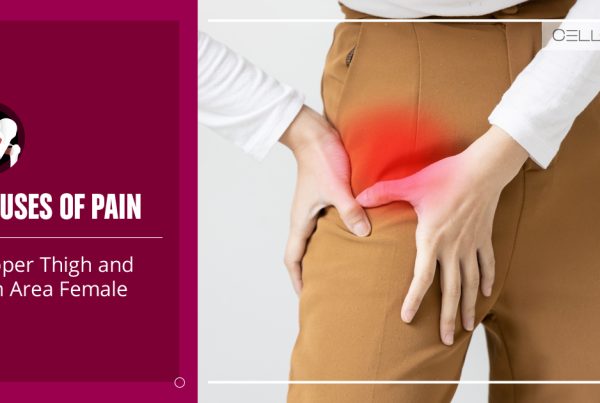Published on: January 5, 2023 | Updated on: August 29, 2024
Arthritis, a leading cause of hip pain and immobility, has increased the number of hip replacement surgeries held every year. The condition is so painful and affects the daily lifestyle of the patients that surgery often seems like the only option to get life back on track. However, that’s not the only option a patient should consider.
There are several noninvasive and nonoperative hip surgery alternatives that you can look into before going in with the surgery. Fortunately, most of these procedures have successfully alleviated the pain and enabled the patient to walk on their own two feet without difficulty. Moreover, the recovery time is much shorter and doesn’t involve the pain the complete hip replacement surgery follows.
Here are the top 10 hip surgery alternatives you should consider and discuss with your doctor before you agree to get under the knife.
1. Conservative Therapies
According to research, conservative therapies have effectively delayed the need for total hip surgery. Therefore, patients with osteoarthritis can usually easily qualify for the traditional therapy requirements.
The therapies involve client education, physiotherapy exercises, and a year-long follow-up. The period for the whole process is as follows:
- Patient education session: 3 hours
- Physiotherapy sessions: 8-12 weeks
- Followup exercises: 12 months
Now, most individuals who go through the whole process experience a significant decrease in pain and an improvement in the joint’s functioning.
2. Corticosteroid Injections
Corticosteroid injections are another effective hip surgery alternative for patients with joint inflammation. These injections have two key elements:
- Corticosteroids
- Hyaluronic acid
These effectively help reduce the inflammation in the affected joints, reducing pain and stiffness.
The corticosteroid injections work fast, are very effective in relieving pain and inflammation of the hip, and can provide relief for months and even years.
Alongside these injections, the specialist may suggest a few changes to the patient’s lifestyle. For example, hip joint exercises, weight loss, not staying in the same position for too long, etc.
However, many doctors and medical experts advise against the use of such injections. While these injections may be very effective for some patients, they sometimes worsen the condition.
3. Cartilage Transplant
Another hip surgery alternative that is slightly invasive is the cartilage transplant.
The doctor can recommend the patient undergo the treatment, depending on the condition and extent of the damage. In this process, a specialist team grows the cartilage and then replaces the damaged part of the cartilage tissue with it.
This method also triggers the bone to produce more cartilage naturally by itself. However, it is only in the experimental stages right now. Therefore, patients with diagnosed osteoarthritis may not benefit from it.
4. Partial Replacement
The doctors may advise a partial replacement procedure in cases where a small area of cartilage is damaged.
However, it is still a surgery, so all the complications that come with the surgery will come part and parcel with it.
5. Arthroscopy
Arthroscopy is a highly recommended and effective treatment for hip joint pain. The procedure is minimally invasive and a suitable treatment plan for those with soft tissue and cartilage damage.
It involves very few minor incisions – hence minimally invasive – made to the tissue and bone so the surgeon can access the hip joint.
They will remove debris around the ball and socket using specialized surgical instruments and close the incision. The process allows the surgeon to see the extent of the damage inside the joint to diagnose and treat the issue.
However, recovery after the procedure will be slow. The patients may have to rely on crutches, canes, or walkers to move around for several weeks.
6. Hip Resurfacing
In hip resurfacing surgery, like the total hip joint replacement, an implant requires replacing the damaged bone. However, it is much smaller, and the procedure is less invasive than complete hip surgery.
It also preserves the normal bone, unlike the complete ball joint replacement. Therefore, the technique initially gained much popularity, especially among younger patients. But later, since it’s a metal-on-metal replacement, it raised many concerns.
7. Exercises
Stretching exercises for strengthening the muscles are another hip surgery alternative. These exercises keep the muscles and tissues surrounding the joint healthy enough to support the hips.
Doctors may recommend exercises like cycling, swimming, and walking to keep your muscles healthy. These are low-impact exercises, so they don’t affect the hip joint negatively.
Alternative or complementary therapies like acupuncture, heat or cold packs, and the TENS technique are also effective in regaining control of your hip and reducing pain.
8. Pain Killer Medications
The doctor may prescribe pain relief medications to reduce joint stiffness and pain. These are often given for short durations for pain relief. Common medicines include:
- NSAIDs
- Capsaicin creams/gels
- Paracetamol
These and other over-the-counter medicines can provide temporary relief and should only be taken briefly. On the other hand, self-medication and taking these prescription drugs for extended periods will only cause damage to the other vital organs.
9. Mobility Aids
Many mobility aids and devices can help the patient get around with ease. These include walking aids, shock-absorbing insoles, etc. These take the pressure off the hip and help you place the weight on the aid rather than the joint itself.
Hence, they serve as effective hip surgery alternatives, making it easier (and less painful) for patients to get around their daily lives.
10. Orthobiological Methods
Regenerative treatment plans are actively taking over the medical world. People today opt for more noninvasive, painless treatments compared to traditional surgeries. These are common joint injuries due to falls and conditions like arthritis.
At CELLAXYS, patients can get treated via two treatment plans for different hip joint ailments: cell-based and platelet-rich plasma therapy (PRP). First, the experienced medical professionals review the patient’s background, diagnostic history, and the condition of the ball and socket joint. Thereby, they devise this minimally invasive treatment plan for each patient.
The recovery timelines for both procedures are short; hence, they are effective hip surgery alternatives. The treatment plan is devised depending on each patient’s condition. Generally, the doctor may perform either of the two cell-based therapies.
The earlier the intervention, the more chances the patient has to avoid hip replacement in the long term. Usually, the degenerative process begins from one side socket of the hip. While it may affect the ball, both sides rarely get damaged simultaneously. So, there’s a chance to save the asymptomatic side if the diagnosis is made in time.
Cell-based Therapies
Cell-based therapy, more commonly known as ‘stem cell therapy,’ is an effective technique to heal the damaged site and joint. In the process, the patient’s healthy cells are harvested and injected into the affected area.
Cell-based therapies improve the functioning of the ball joint and reduce pain. Hence, it reduces the need for hip replacement in the future, something that’s very helpful for young patients.
- I minimally Manipulated Adipose Tissue Transplant (MMAT). MMAT is a transplant where the patient’s fat tissue is processed and injected back into the hip. The cells can also be injected into other affected areas or joints simultaneously. So, while it’s minimally invasive, it’s also a comprehensive approach to help affected arthritic joints all over the body.
- Bone Marrow Concentrate (BMAC). BMAC is another effective method for extracting bone marrow concentrate from the body and reinjecting it to the affected site. This process helps heal the joint and cartilage repair naturally. So, people who suffer from hip joint pain due to arthritic wear and tear often benefit from the procedure.
Research has shown that these have great potential to help the body parts regrow and repair. Hence, they have been proven effective in repairing damaged tissue and bone.
Both of these procedures take 1.5 to 2 hours and involve a lot of X-rays and ultrasounds so the doctor can correctly place the tissue and bone marrow. It would be best if you stayed at the facility for a few hours but will be able to go home on the same day.
Platelet-Rich Plasma Therapy (PRP)
In PRP therapy, the patient’s blood is used as platelet-rich plasma, which acts as an anti-inflammatory agent inside the body. The therapy may be given in isolation to alleviate hip joint inflammation.
As you know, platelets are our body’s first line of defense. So, the PRP procedure involves removing the blood platelets from the drawn sample, thereby processing and reinjecting them. It is these plasma-rich platelets that help in the healing process.
These platelets do the following three things inside the body:
- They release 10 Growth Factors that help produce new tissue cells.
- Then, they draw the healing cells or components from the blood.
- Finally, these release fibrin inside the tissue to help rejuvenate the cells and tissues.
So, the higher the number of plasma-rich platelets, the quicker your recovery will be. This procedure takes about 45 minutes, and patients can go home on the same day.
Cell-based therapies and PRP results are often felt soon after the procedure. For example, patients experience an increased blood supply to the affected area. Moreover, the bones also grow new cells and rejuvenate.
Sources
Footnotes
- Sinatti P, Sánchez Romero EA, Martínez-Pozas O, Villafañe JH. Effects of Patient Education on Pain and Function and Its Impact on Conservative Treatment in Elderly Patients with Pain Related to Hip and Knee Osteoarthritis: A Systematic Review. International journal of environmental research and public health. 2022;19(10):6194.
- Bhandari M, Devereaux PJ, Einhorn TA, Thabane L, Schemitsch EH, Koval KJ, Frihagen F, Poolman RW, Tetsworth K, Guerra-Farfán E, Madden K. Hip fracture evaluation with alternatives of total hip arthroplasty versus hemiarthroplasty (HEALTH): protocol for a multicentre randomised trial. BMJ open. 2015;5(2):e006263.
- Costa ML, Achten J, Parsons NR, Edlin RP, Foguet P, Prakash U, Griffin DR; Young Adult Hip Arthroplasty Team. Total hip arthroplasty versus resurfacing arthroplasty in the treatment of patients with arthritis of the hip joint: single centre, parallel group, assessor blinded, randomised controlled trial. BMJ. 2012;344:e2147.
- Johnson M. Transcutaneous Electrical Nerve Stimulation: Mechanisms, Clinical Application and Evidence. Reviews in Pain. 2007;1(1):7-11.
References
- Projected volume of primary and revision total joint replacement in the U.S. 2030 to 2060. American Academy of Orthopaedic Surgeons. Accessed 9/14/2023.
- Conservative osteoarthritis therapy programme delays need for knee and hip joint replacement surgery.
- Conservative osteoarthritis therapy programme delays need for knee and hip joint replacement surgery. Medical Xpress. Accessed 9/14/2023.
- Inflammatory Arthritis of the Hip. The American Academy of Orthopaedic Surgeons. Accessed 9/14/2023.
- How to Use Crutches, Canes, and Walkers. The American Academy of Orthopaedic Surgeons. Accessed 9/14/2023.
- Arthroscopy. Mayo Clinic. Accessed 9/14/2023.
- Concerns about Metal-on-Metal Hip Implants. FDA. Accessed 9/14/2023.
- Exercises and stretches for hip pain. Medical News Today. Accessed 9/14/2023.
- Low Impact Exercises for Joint Pain. Penn Medicine. Accessed 9/14/2023.
- What types of mobility aids are available?. Medical News Today. Accessed 9/14/2023.
CELLAXYS does not offer Stem Cell Therapy as a cure for any medical condition. No statements or treatments presented by Cellaxys have been evaluated or approved by the Food and Drug Administration (FDA). This site contains no medical advice. All statements and opinions are provided for educational and informational purposes only.
Dr Pouya Mohajer
Author
Pouya Mohajer, M.D. is the Director of Spine and Interventional Medicine for CELLAXYS: Age, Regenerative, and Interventional Medicine Centers. He has over 20 years of experience in pain management, perioperative medicine, and anesthesiology. Dr. Mohajer founded and is the Medical Director of Southern Nevada Pain Specialists and PRIMMED Clinics. He has dedicated his career to surgical innovation and scientific advancement. More about the doctor on this page.
Dr Pejman Bady
Contributor
Dr. Pejman Bady began his career over 20 years ago in Family/Emergency Medicine, working in fast-paced emergency departments in Nevada and Kansas. He has served the people of Las Vegas as a physician for over two decades. Throughout this time, he has been met with much acclaim and is now the head of Emergency Medical Services in Nye County, Nevada. More about the doctor on this page.









